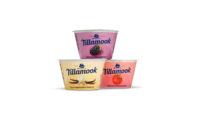You could say that chocolate and dairy are a match made in heaven — though some of today’s health-minded consumers consider the duo sinful indulgence.
“Consumers perceive these products that contain chocolate/cocoa as both tasty and indulgent, but the impact of the increasing focus on consumer health poses a challenge to deliver permissible indulgence,” says Nicole Redini, category strategy manager, dairy and nutrition for Hoffman Estates, Ill.-based Tate & Lyle.
Health concerns aside, the combination of the two categories does deliver some long-time consumer favorites such as chocolate chip ice cream, indulgent chocolate milk and chocolate-coated frozen novelties. And though traditional, the pairing is anything but stuck in its ways. Chocolate/cocoa suppliers continue to innovate to meet evolving consumer needs with new flavors, healthy twists and sustainable sourcing.
Twists on tradition
Almost everyone is aware of the main chocolate varieties: milk, dark and white. However, according to John Pimpo, market segment manager – ice cream for Chicago-based Barry Callebaut, many dairy processors today are looking for something a little different.
“For flavors, customers of course ask for the standard white, milk, dark, but requests for a Caramelized White and Barry Callebaut’s Ruby have been on the rise for innovation,” he explains.
Barry Callebaut introduced Ruby Chocolate, known for its pink hue and fruitier flavor, three years ago, and Pimpo says it’s seen success as a flaked chip and as a coating for frozen novelties.
“It can also continue to be used as a coating for bon-bon type one-bite desserts or in/around ice cream sandwiches or simply as a decoration or drizzle,” he notes.
And Barry Callebaut’s chefs are studying pairing options for the chocolate.
“Ruby is naturally fruity, so it pairs well with berries but also with other fruits like citrus,” Pimpo says. “Other pairings include nuts, spices, spirits and texture marriages with crunchy elements and seeds.”
While some dairy companies are looking for new flavors to add to their products, Rick Stunek, director of marketing and product development at Forbes Chocolate, Broadview Heights, Ohio, says there’s also a return to the basics of making indulgent whole chocolate milk.
“Some dairies had moved away from making whole chocolate a number of years ago when full-fat milk was not really in vogue,” he notes. “Now those dairies are either returning that to their product line or taking the whole chocolate product they had been doing and working to improve it.”
Beyond trends in chocolate varieties, dairy processors are looking for new, interesting pairings with the ingredient. For example, “pine nuts, honey and lavender are making their way into the mix,” notes An Ho, research and development director for International Food Products Corp., Fenton, Mo. She’s also seen growing interest in combining chocolate with more unique fruits such as tart cherry, pomegranate, lychee and apricot.
Tonya Lofgren, marketing manager for Hudson, Wis.-based Ciranda Inc., says that the popularity of globally inspired flavors likely will influence future chocolate flavor pairings.
“It would not be a surprise to see spices like cinnamon, cayenne or turmeric making a more prominent entry into dairy,” she adds.
Ho notes that growth in chocolate/spice combinations may be due to consumer interest in ingredients seen as promoting natural wellness, such as “turmeric, ginger, chili, cinnamon and combination spices like chai.” Tea, especially matcha, also is coming into the chocolate pairing picture with its healthful connotations.
Chocolate, but make it healthy
With wellness trending, can chocolate be part of a healthy diet? Pimpo thinks so. For its part, Barry Callebaut offers solutions that can fit a range of consumer dietary trends, from ketogenic and paleo diets to low- and no-sugar products.
“We are actually in the process of launching a lifestyles campaign focusing on the various eating habits of the American consumer,” he says. “We have chocolates that contain protein, low/no sugar or appropriate sugar substitutes, higher fat content — so chocolate can work with and appeal to many of these lifestyles.”
Mark Robert, technical director, dairy, Tate & Lyle, says dairy beverages are a space where chocolate and health claims can coexist.
“Processors have increasingly looked to produce chocolate beverages using ultrafiltered milk or lactose-free milk, which has seen a rise in popularity for a variety of reasons, including increased digestibility and a reduction of sugars,” he explains. “There has also been a rise in chocolate dairy beverages with higher protein levels, positioned as recovery beverages to attract athletes and consumers generally looking to add protein to their diets.”
According to Lofgren, the “free-from” wellness trend is something many processors pay attention to when creating dairy products with chocolate. As part of this, many manufacturers are looking at reducing allergens when choosing a chocolate ingredient for inclusions or toppings.
“Low/no/reduced allergen claims are growing across dairy and chocolate confectionery with milk, nuts and soy being the main ingredients of concern,” she notes. “While allergen use is decreasing, organic claims are increasing, showing a demand for products that are also free from synthetic pesticides or artificial colors and flavors.”
Lofgren says Ciranda is well positioned to handle these demands, as its organic chocolate production occurs “in a dedicated facility that does not process the top eight major U.S. food allergens.”
As more dairy processors seek to produce healthier offerings, Stunek says adding cocoa/chocolate to a product has an additional benefit: masking off notes sometimes associated with these foods.
“One of the great things about cocoa is that it masks a lot of unpleasant flavors that may come from other ingredients, including those that add health benefits,” he says. “So many of the new products on the market use cocoa as a flavoring, and that is obviously a positive thing for our industry.”
And despite being associated with indulgence, chocolate is also known to have health benefits, notes Ho.
“Chocolate and cocoa have always been known for their antioxidant and mood-improving attributes,” she says “But [these benefits] can be easily enhanced with plant-based fats for creaminess, protein, fiber, vitamins or minerals.”
Cleaner formulations
As consumers look for products with fewer ingredients, naturally alkalized chocolate or chocolate with no alkalizing at all is growing in popularity, maintains Pimpo.
“Barry Callebaut has several naturally alkalized cocoas and recently launched a product called ‘Natural Dark,’” he adds. “The darker color (and flavor attributes) of cocoa are typically generated via alkalization, but some customers want to see less ingredients or processing in regards to their cocoa. Barry Callebaut’s Natural Dark provides customers with a rich, dark cocoa without the aid of any alkalization.”
Cargill Cocoa & Chocolate, part of Minneapolis-based Cargill, also has observed the consumer trend toward clean labels, notes Kevin McDonald, chocolate and compound product line manager.
“We know consumers are paying close attention to product labels, with an emphasis on transparency and real ingredients,” he says.
For its part, Cargill Cocoa & Chocolate launched Wilbur Chocolate Duet, which is a mixture of cocoa powder and chocolate liquor. It enables customers to make claims such as “made with real chocolate” in their products.
“With a strong chocolate flavor, it also helps brands deliver on consumer expectations for indulgent dairy products. Unlike traditional chocolate liquors, Wilbur Duet handles like cocoa powder, making it easy to incorporate into ice creams, as well as dairy and dairy alternative beverages,” explains McDonald.
According to Robert, chocolate actually can be a clean-label solution for dairy processors looking to add natural color and flavor to their products.
“As the clean-label trend continues, dairy processors will need to be mindful of using artificial flavors, colors and sweeteners,” he explains. “In response, processors are relying on cocoa to deliver on color versus adding artificial colors such as caramel.”
Ethical claims
Along with the clean-label trend comes consumer desire for transparency in the overall supply chain, notes Ho.
“Cocoa suppliers and chocolate makers are reviewing their supply chain in order to have a positive effect on the environment, as well as [on] the cocoa farmers,” she adds. “Changes will need to be made to appease consumers who seek transparency and give them a feeling of accountability for the foods they buy.”
According to Taco Terheijden, sustainability lead, Cargill Cocoa & Chocolate, consumers are increasingly interested in the stories behind products, and this often includes a brand’s sustainability efforts. He points to a 2019 Innova Market Insights consumer survey, which found that “56% of global consumers say that stories around a brand influence their purchase decisions.”
This desire for transparency is very apparent in the chocolate/cocoa space, Terheijden explains.
“Data from Innova found the percentage of launches making specific ethical claims rose from one-fifth of launches in 2015 to one-third of launches in 2019,” he notes. “Clearly, today’s consumers expect companies to provide information and a high degree of honesty about ingredients, including their origin and production processes.”
Brooke Smith, business development manager, sustainability for Barry Callebaut, says she has noticed that chocolate product launches touting sustainability are a big part of category growth.
“Research from the NYU Stern Center for Sustainable Business indicates that while sustainability-marketed products made up 16.1% of the CPG market in 2019, they accounted for 54.7% of the CPG market growth 2015-2019,” she notes.
And Barry Callebaut's internal research indicates that consumers prefer a sustainably marketed product over a conventionally marketed one by three to one in categories such as chocolate candy, cocoa powder and chocolate milk, Smith adds.
One way Barry Calleabut is addressing sustainability in chocolate is with its “Forever Chocolate” corporate initiative, Smith says. Through the campaign, the company pledges that it will help lift more than 500,000 cocoa farmers out of poverty, that it will eradicate child labor from its supply chain, that it will become carbon- and forest-positive, and that it will have 100% sustainable ingredients in all of its products.
Terheijden says sustainable, ethical sourcing also is a big priority for Cargill Cocoa & Chocolate.
“As one of the world’s leading cocoa and chocolate producers, we sit at the center of the cocoa sector, connecting all the players in the value chain and strengthening collaborations,” he says. “We are integrating cutting-edge digital technologies to achieve maximum transparency from bean to bar, as we continuously measure and improve our approach towards the sustainability challenges we collectively face.”
Some of Cargill’s sustainability efforts include barcoding cocoa bags to track their origins through cooperative management systems, child-labor monitoring and remediation systems, and GPS polygon mapping of 72% of all farmers in its direct supply chain.
“Cargill is well on its way to identify[ing] where the cocoa comes from, which areas may be at risk of deforestation and how to mitigate this risk through specific interventions,” Terheijden explains.








